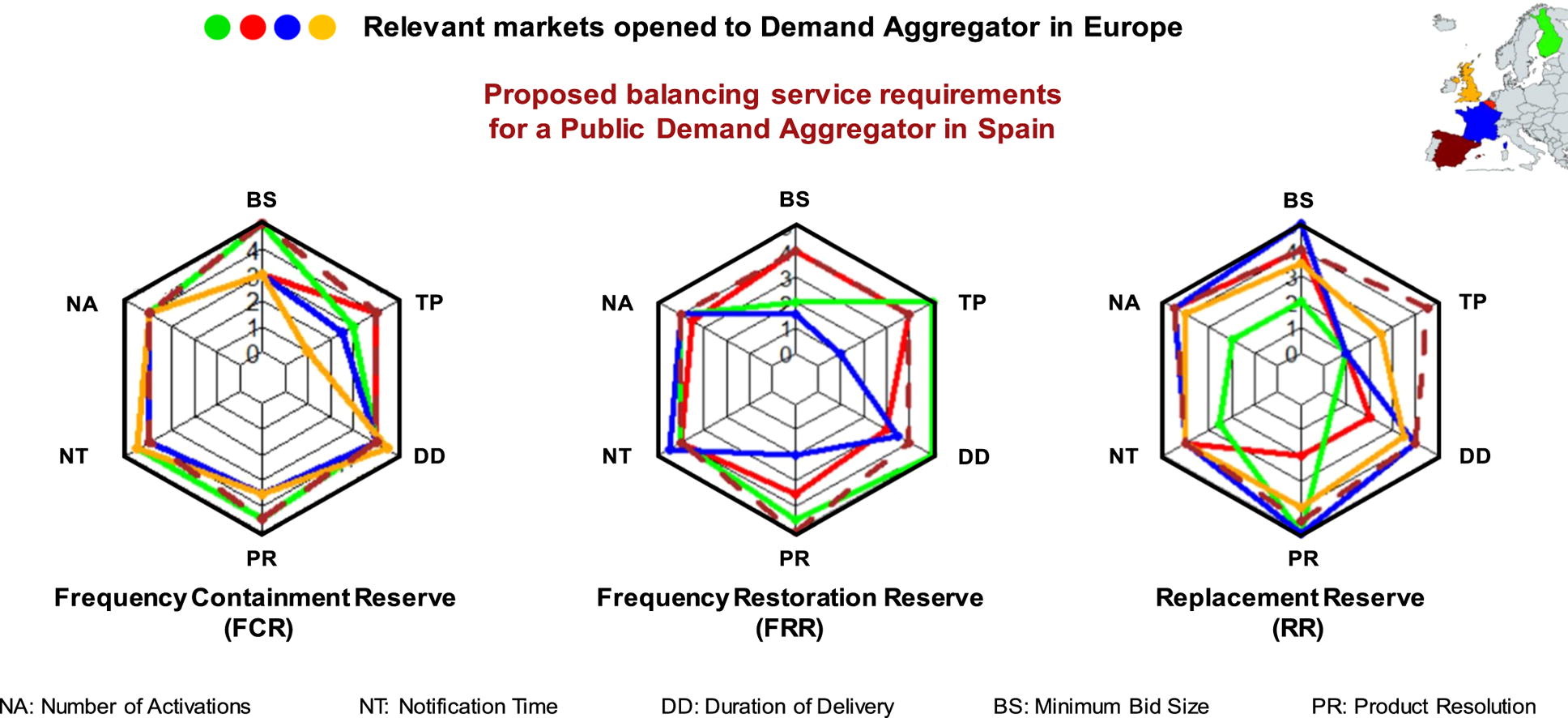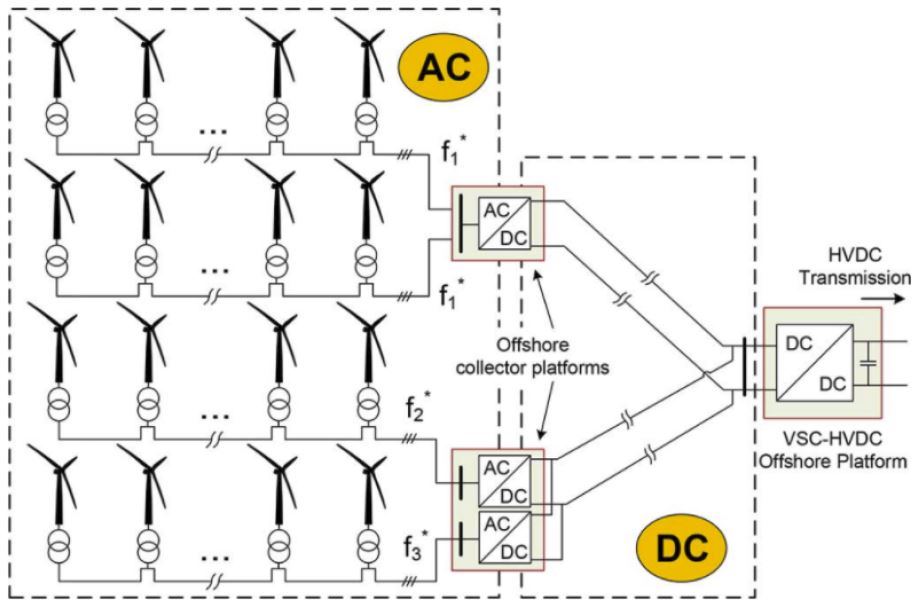IREC
New paper published in Applied Energy
Fri, 04/03/2020 - 12:05 — admin
 The paper entittled Critical evaluation of European balancing markets to enable the participation of Demand Aggregators has been published in Applied Energy This paper has been done in collaboration with the Institute for Energy Research of Catalonia (IREC). This study analyzes barriers and enablers of four European electricity markets and proposes a new market framework that would enhance Demand Aggregators' participation. Main barriers for Demand Aggregators have been identified and analyzed and a regulation scheme is proposed to enable Demand Aggregators participation. According to our results, small tertiary building aggregation is still not economic viable but existing municipal retailers could consider to extend their operations to Demand Aggregation.
The paper entittled Critical evaluation of European balancing markets to enable the participation of Demand Aggregators has been published in Applied Energy This paper has been done in collaboration with the Institute for Energy Research of Catalonia (IREC). This study analyzes barriers and enablers of four European electricity markets and proposes a new market framework that would enhance Demand Aggregators' participation. Main barriers for Demand Aggregators have been identified and analyzed and a regulation scheme is proposed to enable Demand Aggregators participation. According to our results, small tertiary building aggregation is still not economic viable but existing municipal retailers could consider to extend their operations to Demand Aggregation.
Critical evaluation of European balancing markets to enable the participation of Demand Aggregators
Fri, 04/03/2020 - 11:42 — admin| Publication Type | Journal Article |
| Year of Publication | 2020 |
| Authors | Mattia Barbero; Cristina Corchero; Lluc Canals; Lucia Igualada; F.-Javier Heredia |
| Journal Title | Applied Energy |
| Volume | 264 |
| Journal Date | 04/2020 |
| Publisher | Elsevier |
| ISSN Number | 0306-2619/ |
| Key Words | Demand Aggregator; Regulatory framework; Ancillary Services; Demand Response; Tertiary building management; research; paper |
| Abstract | European Directives are incentivizing consumers to play an active role in the electricity system and to collaborate to maintain its stability, which has been historically provided by large generation power plants. However, it is not easy for the System Operator to handle the coexistence of consumers and generators in the same markets. Under these circumstances, a new actor allows small residential and commercial consumers to participate in flexibility markets: The Demand Aggregator. However, balancing markets opened to Demand Aggregators still present several barriers that do not allow their practical participation. This study analyzes barriers and enablers of four European electricity markets and proposes a new market framework that would enhance Demand Aggregators’ participation. To validate the proposed market and to understand the economic potentials of aggregated small tertiary buildings, a Demand Aggregator is simulated using real building’s consumption data. Results show that technical requirements to participate in balancing markets such as the minimum bid size, the symmetricity of the offer and the product resolution strongly affect incomes for Demand Aggregators. However, neither in the proposed market, the creation of a Demand Aggregator whose business model is focused on small tertiary buildings does not seem realistic due to low incomes in comparison to the fixed costs necessary to enable Demand Response, especially if only the air conditioning system is considered. |
| URL | Click Here |
| DOI | 10.1016/j.apenergy.2020.114707 |
| Export | Tagged XML BibTex |
A MIP formulation of a Hybrid AC-DC offshore wind power plant topology
Wed, 07/11/2018 - 11:26 — admin| Publication Type | Conference Paper |
| Year of Publication | 2018 |
| Authors | Cristina Corchero; Josep Homs-Moreno; F.-Javier Heredia; Lucia Igualada; Mikel de Prada |
| Conference Name | 23th International Symposium on Mathematical Programming |
| Conference Date | 01-06/07/2018 |
| Conference Location | Bordeaux |
| Type of Work | contributed presentation |
| Key Words | research; hybrid AC-DC; offshore wind power plant; local branching |
| Abstract | The current study analyses a hybrid o↵shore wind farm design in which individual wind turbine power converters are removed from wind turbines and are installed on intermediate o↵shore collector platforms. In this study a compact and small-sized mixedinteger linear optimisation model makes four decisions with the goal of minimising installation and operation costs: the location and the number of o↵shore platforms and power converters to be installed, the optimal wind farm cable layout and the cluster optimal operating frequency of each wind turbine. The solutions found either for small and large o↵shore wind farms improve notoriously real-world designs, reducing up to 8 percent installation and maintenance costs. On the optimization technical results, a variant of Local Branching has been developed, reducing in some cases more than half of computing time with respect to default Local Branching. The model developed serves as a mathematical tool to provide rigorous evidences of the suitability of the hybrid design versus traditional o↵shore wind farm designs. |
| URL | Click Here |
| Export | Tagged XML BibTex |
New MSc Thesis on optimal design of hybrid AC-DC offshore wind power plant topology through MIP.
Thu, 10/12/2017 - 23:00 — admin
 The MSc Thesis entitled A MIP formulation of a Hybrid AC-DC offshore wind power plant topology has been defended by the student Josep Homs, from the Interuniversity Master in Statistics and Operations Research UPC-UB. This work has been advised by myself in collaboration with Cristina Corchero and Lucia Igualada from the Catalonia Institute for Energy Research. This thesis offers a simple, compact and small-sized MIP optimization model that models a hybrid off-shore wind farm design. The model has been tested with small off-sshore wind farms with 24 turbines and 7 platforms locations that may house up to 28 converters. The optimal solution has been obtained within 162 seconds, proving the great potential of the model. Next, the algorithm has been tested with a large realistic case involving 80 turbines and 10 platform locations that may house up to 40 power converters. In this case, the algorithm is able to find a feasible solution 10 milions EUR cheaper than standard current real-world layout designs in just six hours.
The MSc Thesis entitled A MIP formulation of a Hybrid AC-DC offshore wind power plant topology has been defended by the student Josep Homs, from the Interuniversity Master in Statistics and Operations Research UPC-UB. This work has been advised by myself in collaboration with Cristina Corchero and Lucia Igualada from the Catalonia Institute for Energy Research. This thesis offers a simple, compact and small-sized MIP optimization model that models a hybrid off-shore wind farm design. The model has been tested with small off-sshore wind farms with 24 turbines and 7 platforms locations that may house up to 28 converters. The optimal solution has been obtained within 162 seconds, proving the great potential of the model. Next, the algorithm has been tested with a large realistic case involving 80 turbines and 10 platform locations that may house up to 40 power converters. In this case, the algorithm is able to find a feasible solution 10 milions EUR cheaper than standard current real-world layout designs in just six hours.
